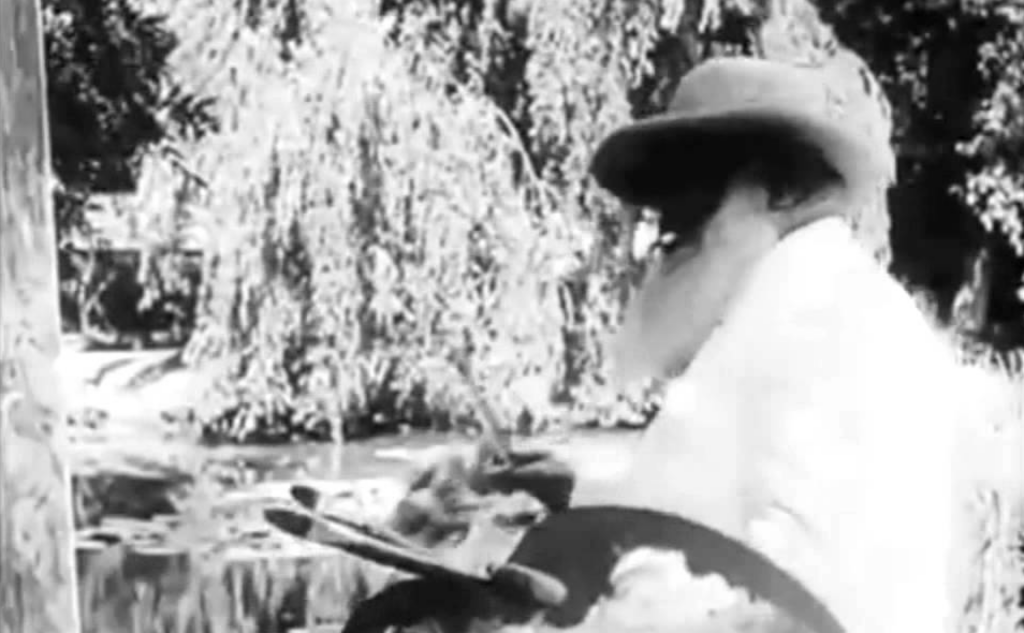المفاهيم الأساسية
Monet's final paintings were a direct response to the horrors of World War I, serving as a war memorial to the lives lost.
الملخص
In 1915, Claude Monet painted in his Giverny garden amidst the turmoil of World War I. The peaceful scenes captured on film contrasted starkly with the nearby battlefields. Monet's art was not just an escape but also a patriotic contribution during a time of great suffering and loss. His water lily paintings are seen as a poignant response to the war, symbolizing grief and remembrance.
تخصيص الملخص
إعادة الكتابة بالذكاء الاصطناعي
إنشاء الاستشهادات
ترجمة المصدر
إلى لغة أخرى
إنشاء خريطة ذهنية
من محتوى المصدر
زيارة المصدر
www.openculture.com
Watch Footage of Claude Monet Painting in His Famous Garden at Giverny (1915)
الإحصائيات
Monet's final eight water lily paintings were viewed as a direct response to the savagery of World War I.
The peace of Monet's garden was occasionally disrupted by gunfire from nearby battlefields.
Monet saw painting as his patriotic contribution during wartime.
A group of paintings featuring weeping willows symbolized mourning and loss during the war.
اقتباسات
الرؤى الأساسية المستخلصة من
by Ayun Hallida... في www.openculture.com 03-05-2024
https://www.openculture.com/2023/06/watch-footage-of-claude-monet-painting-in-his-famous-garden-at-giverny-1915.html
استفسارات أعمق
How did other artists of that era respond to the atrocities of World War I?
Many artists of that era, like Monet, were deeply affected by the horrors of World War I. Some responded by creating art that reflected the devastation and loss caused by the conflict. For example, painters such as Otto Dix and George Grosz depicted the brutality of war through their stark and often grotesque imagery in works like "The Trench" and "The Stretcher-Bearers." These artists used their art as a form of protest against war, highlighting its senseless violence and human cost.
What impact did Monet's art have on future generations' understanding of war and its consequences?
Monet's art, particularly his series of water lily paintings created during World War I, had a profound impact on future generations' understanding of war and its consequences. By using his artistic talent to create serene scenes amidst chaos, Monet provided viewers with a sense of solace and contemplation in the face of tragedy. His paintings served as a poignant reminder of the beauty that can exist even in times of turmoil, prompting reflection on the human experience during wartime. Through his work, Monet helped people connect emotionally with the realities of war while also offering them moments of respite from its harshness.
How does art serve as a form of resistance during times of conflict?
Art serves as a powerful form of resistance during times of conflict by providing individuals with an outlet for expressing dissent or challenging oppressive forces. Artists can use their creativity to convey messages of defiance or critique against injustice or violence. In contexts like wartime where freedom of expression may be restricted or censored, art becomes a subversive tool for voicing dissent without direct confrontation. Whether through subtle symbolism or overt political statements, artworks can inspire change, solidarity among communities facing adversity ,and provoke critical thinking about social issues .By defying oppressive regimes through creative means ,artists contribute to shaping narratives ,raising awareness,and fostering resilience within societies experiencing conflict .
0
